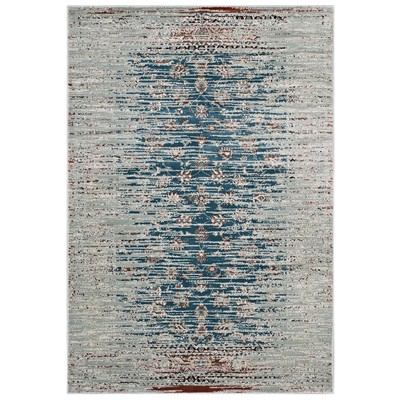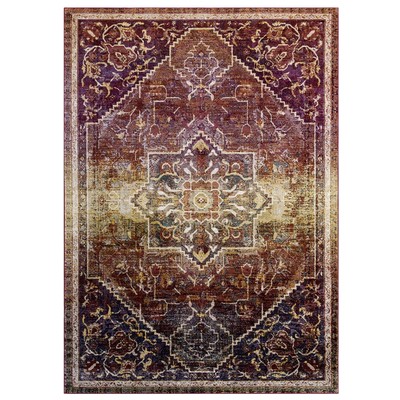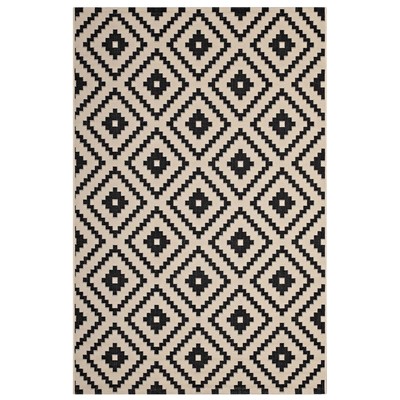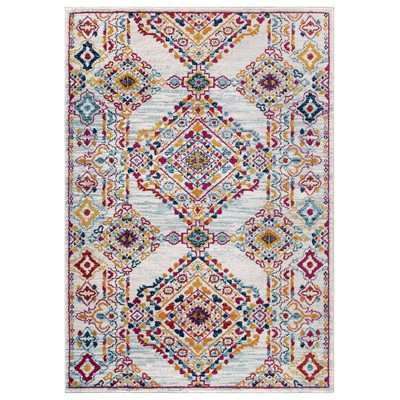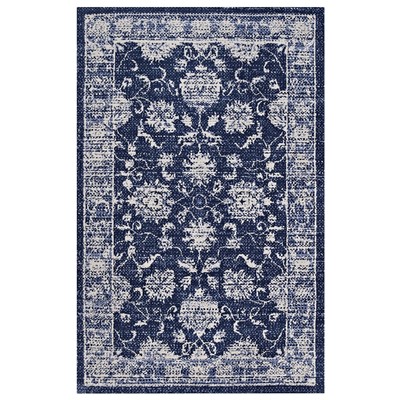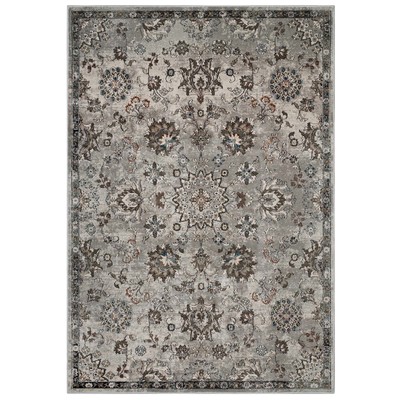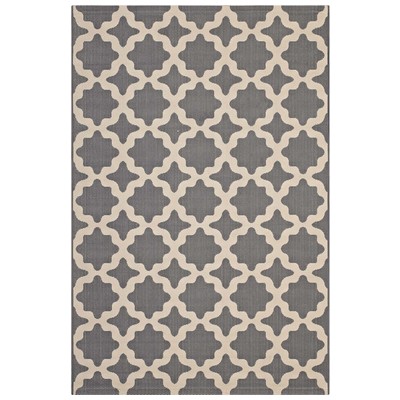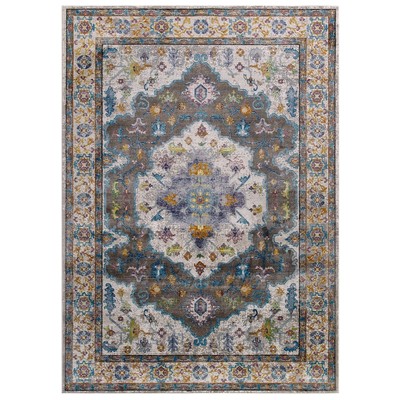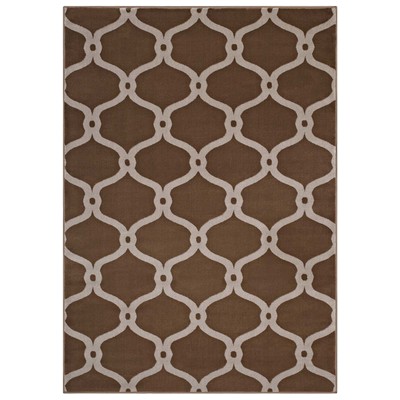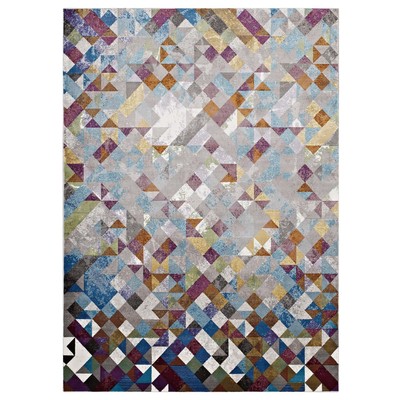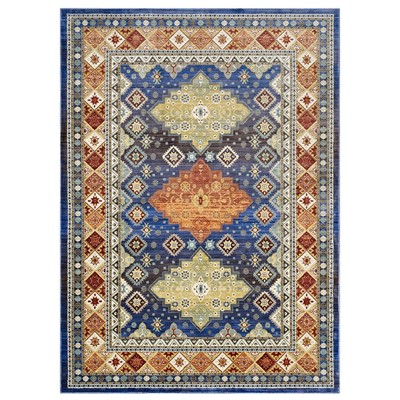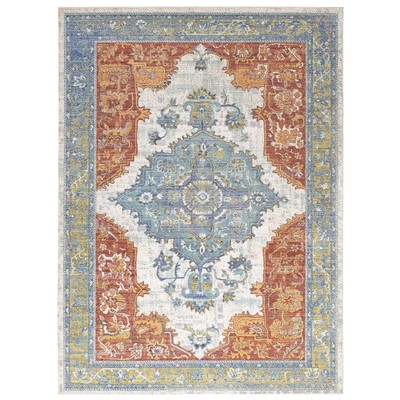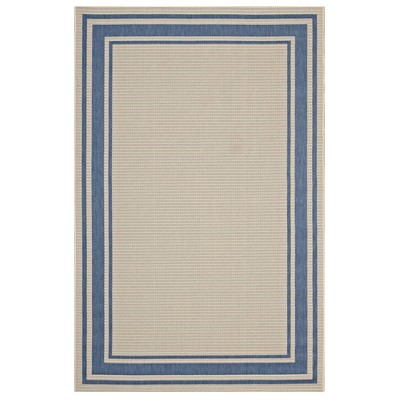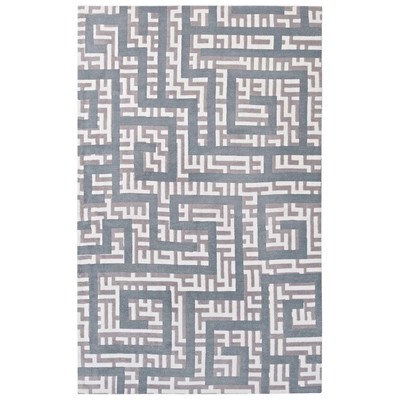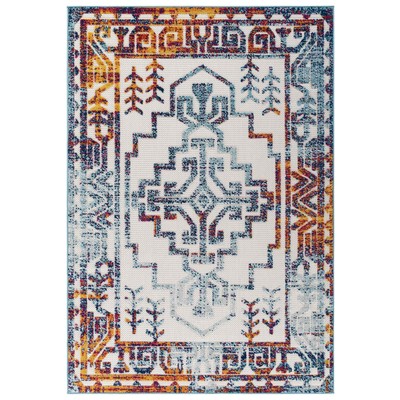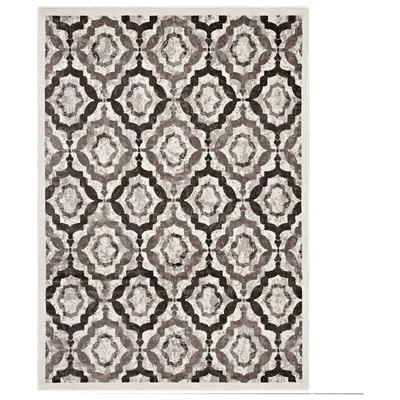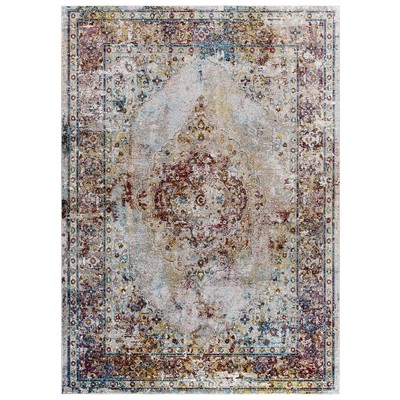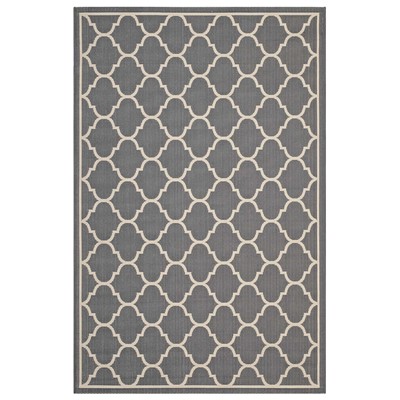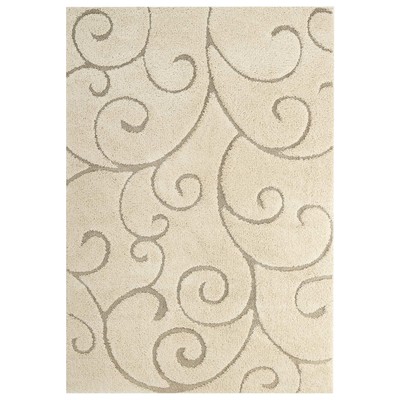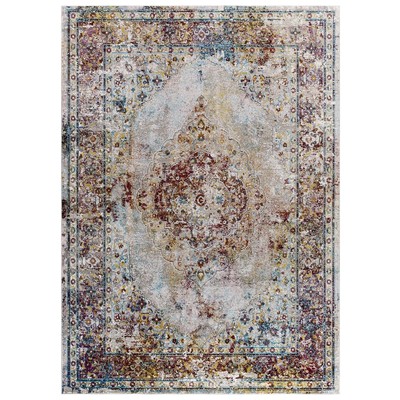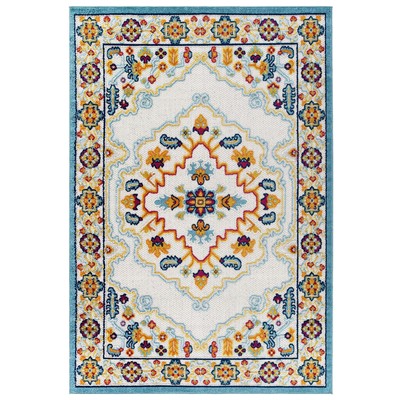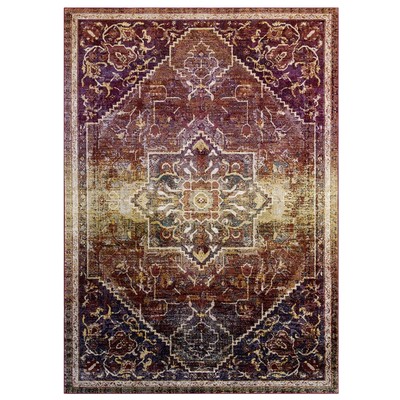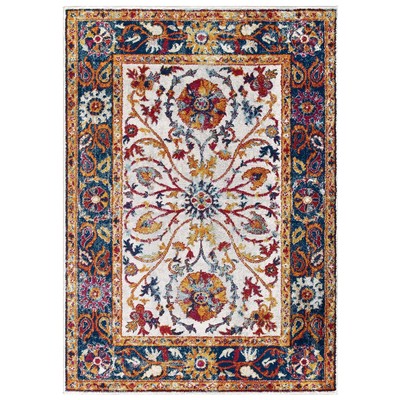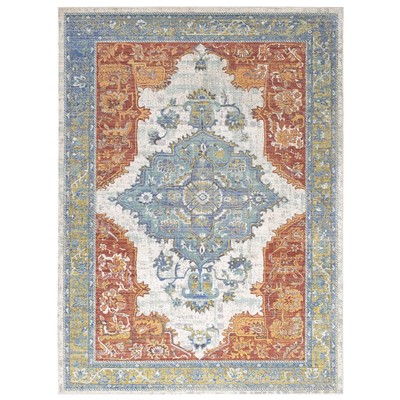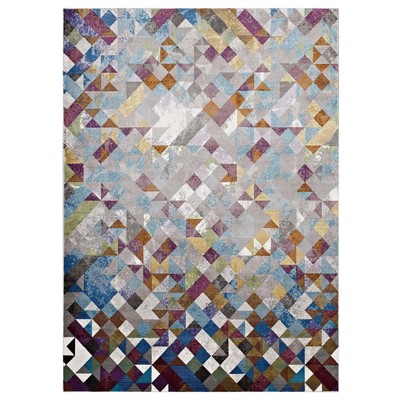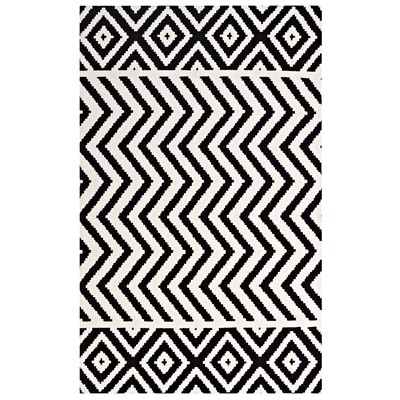I’m deep in the weeds of choosing a few new area rugs for my home, and you know what that means: you get to skip the drudgery and go straight to the short version. Now, I talked a lot about choosing an area rug a long time ago. But in addition to updating these older musings, today I want to break down the broad strokes of sizing and styling an area rug to fit your space. It’s a tricky prospect, even with a measuring tape, to visualize how an area rug will look with your furniture. And it can be all-too-tempting to scale down in size to save a buck. Here’s my advice to make sure you get it right.
The Hokey Pokey

The most common placement for an area rug in your living room is right smack dab in the middle of your furniture, usually with the front two feet touching the rug and the backend on your hard floor. Visually, this will tie your living room set together, giving the space a sense of cohesion. That’s especially important in an open greatroom, where the boundaries between different zones of the room can begin to blur. Practically, arranging your heavy furniture this way helps keep your seating and rug from slipping around. But most importantly? As long as two feet from all the pieces of your living room sit fit on the rug, it won’t feel too small for your space. Which means you can get away with a rug that’s slightly smaller (and less expensive).
Go All-In

Not worried about splurging on a bigger rug? Then it doesn’t hurt to go all-in. That is, making sure all four feet of all your furniture fit squarely on top of your rug with room to spare. The effect here is really nice, but you can’t skimp on it: having your furniture not quite or just barely fit will make the space feel cramped, even if the arrangement isn’t. Going All-In means being willing to buy a rug big enough for breathing room. For a living room, this is one option among many. But anywhere you’ll be frequently moving chairs (a dining room or home office), it’s a MUST. Rolling your office chair over the edge of a rug will drive you nuts; catching your chair leg on the rug is can ruin your dinner. Always size up in places with high chair-movement.
Please Look At My Area Rug

What about no feet on the area rug? A smaller rug will cover the center of your living room set, keep your feet cozy, and show off the full design underneath your coffee table, right? Smaller rugs are less expensive, so you can either save the money or upgrade to a nicer rug if you downsize. But rugs styled this way are often doomed to feel undersized – and by extension, make your living room feel cramped or unbalanced. The one way you can really get away with it is by leveraging the styling and setting the rug at an angle. Breaking from the 90 degree angle grid might grate your sensibilities, but if you don’t mind a few jaunty angles? A smaller rug placed askew can add a bit of flair to your space, and “fake” being bigger if you tuck the corners under a piece of furniture.
The Trip Hazard

Well, you might be thinking, if styling can make one small rug work, why not LOTS of small rugs?! And, okay, I hear you. It’s a notion that isn’t without merit, especially when so much design advice encourages you to have an area rug for every room and zone in your home. Rather than shelling out for a bunch of huge rugs, why not toss a smallish accent rug with each set of furniture to give it that little anchor and call it a day? Maybe overlap them here and there? The answer is simple: because it’s a trip hazard. The more jaunty angles and exposed rug edges you have in places your feet will be, the more likely you are to end up flat on the floor yourself – especially if the rugs are overlapping. It can look cool, but for the love of Pete, keep your walkways safe!
Area Rug Collage

The exception? A place without any foot traffic. I’m including this one for the folks who share my quiet BoHo sensibilities; despite my two left feet, I really do love this look. While the go-to area rug setup for a bedroom is the Early Bird Special, you can accomplish the same function (warm feet in the morning) with multiple smaller rugs. If your bed frame sits flat on the floor, the distinction is mostly-moot (other than maybe the price difference). But if you have a tall, leggy bed frame, layering multiple small rugs underneath your bed is a great way to get a playful look while still showing off some of your wood floors. And as long as you make sure the rugs overlap underneath the bed, you won’t have to worry about stubbed toes or skinned knees.
Doubling Up

Alternatively, you can layer two rugs of different sizes – provided the smaller rug also won’t see much traffic. More a way to style a room than to style a rug, this is an increasingly popular way to jazz up a sitting area or dining room. The technique is simple: start with a large round or rectangular area rug, preferably one that’s made of natural fibers, like jute or sisal. Then, simply add a second rug on top – specifically, a hide or sheepskin rug. And voila: you have an instant contrast of color and texture. The shaped rug will draw the eye while also covering up the simpler (less expensive) fiber rug beneath. Where jute is more durable to daily traffic, cowhide or sheepskin are softer underfoot; positioned right, you’ll get the best of both durability and comfort as well as the style boost.
Early Bird Special

If you have hard floors, you know there are plenty of reasons to have an area rug: sound dampening, floor protection, style, and of course temperature control. Most hard floors get cold, and a good rug will not only protect your feet on a chilly morning, but add a little much-needed insulation to your room. Decorative rugs are a staple of living spaces, but in a bedroom, you want to splurge on something soft, warm, and toe-curlingly plush, then place it about 2/3 of the way under your bed, so you naturally step onto it when getting up in the morning. Can you skimp with smaller area rugs on either side? Sure. But a big, soft landing pad is worth the splurge, even if most of it is hidden beneath your bed frame.
One and Done

Hate the idea of trying to size and style your rugs, and want to just get the biggest sucker you can find and roll it out across the whole length of your great room? That’s… actually an option. A rug that size will cost a pretty penny, and be more than a little cumbersome to move. It’ll also be a little bit lacking in terms of a sense of division between the different zones of your space. But done right, rolling out the red carpet – so to speak – creates a nice plush sense of harmony while creating really distinct, clear walkways around the perimeter of your space. Not a bad option for a greatroom that lacks cohesion, and a less fussy alternative to choosing and sizing matching rugs for every part of your space.
Pave The Way

Last but not least, I’ll tackle a finicky subset of area rugs: the runner. These long, skinny rugs are like the landing strip of home decor, marking a clear line for a walkway that directs traffic, protects your floors, and adds a little style and comfort. But this powerful tool is one people tend to abuse, crisscrossing their houses with skinny rugs until they’ve made… you got it, a trip hazard. Especially paired with lots of little rugs, too many runners will make your home feel cluttered and busy, not to mention a real pain to keep clean. In moderation, though, a good runner can be a showstopper – along the sink-side of a kitchen, lining a hall or confusing entryway path, or even in a bathroom. Just take care not to overdo it; no end-to-end runners, and definitely no overlapping intersections!
Area rugs come in lots of standard sizes and shapes that won’t always be a good match for the room you want them in. But if you start with a clear idea of how you want to style your space and good measurements, it’s not hard to narrow down your options. Using blue painters’ tape to mark out corners or edges on your floor will give you a better sense of the actual size of a rug before you get it home, and help you avoid buying one that looks great but doesn’t fit the scale of your space.
Shop Area Rugs:


